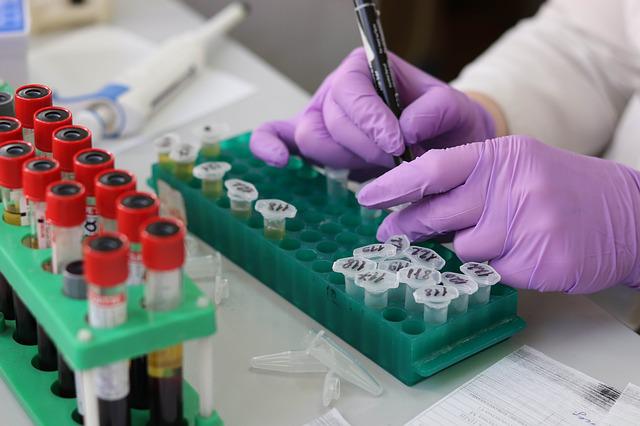Test Amit sep
Chemical Periodicity

The properties of the elements that show chemical periodicity include:
Atomic size: Elements' atomic size increases as one moves from left to right across a period in the periodic table and decreases as one moves down a group.
Ionization energy: Elements' ionization energy increases as one moves from left to right across a period in the periodic table and decreases as one moves down a group.
Electronegativity: Elements' electronegativity increases as one moves from left to right across a period in the periodic table and decreases as one moves down a group.
Chemical reactivity: The reactivity of elements generally decreases as one moves down a group. Still, it varies within a period, with elements in the middle of the period being the most reactive.
Metallic and non-metallic behavior: The elements on the left side of the periodic table tend to be metallic in nature, while those on the right side tend to be non-metallic.
Chemical periodicity refers to the recurring and systematic trends in the properties of the elements in the periodic table. These trends are based on the elements' electron configurations, which are determined by the number of protons in their atomic nucleus. As a result, elements with similar electron configurations have similar chemical and physical properties, and these properties can be predicted based on their position in the periodic table. Therefore, the periodic table is arranged in rows (periods) and columns (groups) to highlight these patterns and make it easier for chemists to predict the behavior of elements and their compounds.
The properties of the elements that show chemical periodicity include:
Atomic size: Elements' atomic size increases as one move from left to right across a period in the periodic table and decreases as one moves down a group.
Ionization energy: Elements' ionization energy increases as one move from left to right across a period in the periodic table and decreases as one moves down a group.
Electronegativity: Elements' electronegativity increases as one move from left to right across a period in the periodic table and decreases as one moves down a group.
Chemical reactivity: The reactivity of elements generally decreases as one moves down a group. Still, it varies within a period, with elements in the middle of the period being the most reactive.
Metallic and non-metallic behavior: The elements on the left side of the periodic table tend to be metallic in nature, while those on the right side tend to be non-metallic.
These trends in the properties of elements in the periodic table can be used to predict their behavior in chemical reactions and help in the classification of elements and their compounds.
Atomic size refers to the distance between the nucleus of an atom and its outermost electrons. In general, atomic size increases as one moves down a group (vertical column) in the periodic table and decreases as one move from left to right across a period (horizontal row). This trend is due to the increasing number of electron shells and protons in the nucleus, which attracts the electrons closer and makes the atom larger.
However, there are some exceptions to this trend, such as in the case of lanthanides and actinides, where the atomic size decreases with the increasing atomic number due to the increase in the effective nuclear charge, which attracts the electrons closer to the nucleus.
Atomic size is an important factor in determining an element's reactivity and chemical properties and its compounds.
Ionization energy is the minimum amount of energy required to remove an electron from an atom in its gaseous state to form a positively charged ion. In general, the ionization energy of an element increases as one moves from left to right across a period (horizontal row) in the periodic table and decreases as one moves down a group (vertical column).
The increasing number of protons in the nucleus and the corresponding increase in the attractive force between the nucleus and the electrons can explain this trend. Elements with higher ionization energies have more tightly bound electrons, making them more difficult to remove.
Ionization energy is important in determining the behavior of elements in chemical reactions and their tendency to form positive ions or cations. It also affects the reactivity and stability of an element and its compounds.
Electronegativity is a measure of an atom's ability to attract electrons toward itself in a chemical bond. In general, electronegativity increases as one moves from left to right across a period (horizontal row) in the periodic table and decreases as one moves down a group (vertical column).
This trend can be explained by the increasing number of protons in the nucleus, which creates a stronger attractive force for electrons, making the atom more electronegative. Elements with higher electronegativities have a stronger ability to attract electrons towards themselves, which can affect the nature of the chemical bond formed between atoms.
Electronegativity is an important factor in determining the type of bond that will form between atoms and the bond's strength and stability. It also affects the reactivity and chemical properties of elements and their compounds.
Chemical reactivity refers to the ability of an element or a compound to undergo chemical reactions and form new substances. In general, the chemical reactivity of elements decreases as one moves down a group (vertical column) in the periodic table and varies within a period (horizontal row).
Elements in the upper right corner of the periodic table, such as noble gases, have low reactivity due to their full valence electron shells, which make them chemically stable. On the other hand, elements in the middle of the periodic table, such as alkali and alkaline earth metals, have high reactivity due to their low ionization energy and tendency to lose electrons in chemical reactions.
The chemical reactivity of elements is affected by several factors, including their electron configuration, ionization energy, electronegativity, and electron affinity. Therefore, understanding the chemical reactivity of elements is important in predicting the behavior of elements and their compounds in chemical reactions and in designing new materials and substances.
Metallic and non-metallic behavior refers to the characteristics of elements in terms of their physical and chemical properties. Elements on the left side of the periodic table, such as the alkali and alkaline earth metals, are generally considered to have metallic properties, while those on the right side, such as the non-metals, are considered to have non-metallic properties.
Metallic elements are typically characterized by their high conductivity of heat and electricity, malleability, and ductility. They also have a shiny appearance and tend to be good reducing agents, meaning they readily give up electrons in chemical reactions.
Non-metallic elements, on the other hand, are typically characterized by their insulating properties and low conductivity of heat and electricity. They also tend to be poor, reducing agents, meaning they readily accept electrons in chemical reactions. Non-metallic elements include noble gases, halogens, and non-metals.
The distinction between metallic and non-metallic behavior is important in understanding the properties and behavior of elements and their compounds in chemical reactions and in designing new materials and substances.



Please Sign In or Sign Up to leave a Comment.